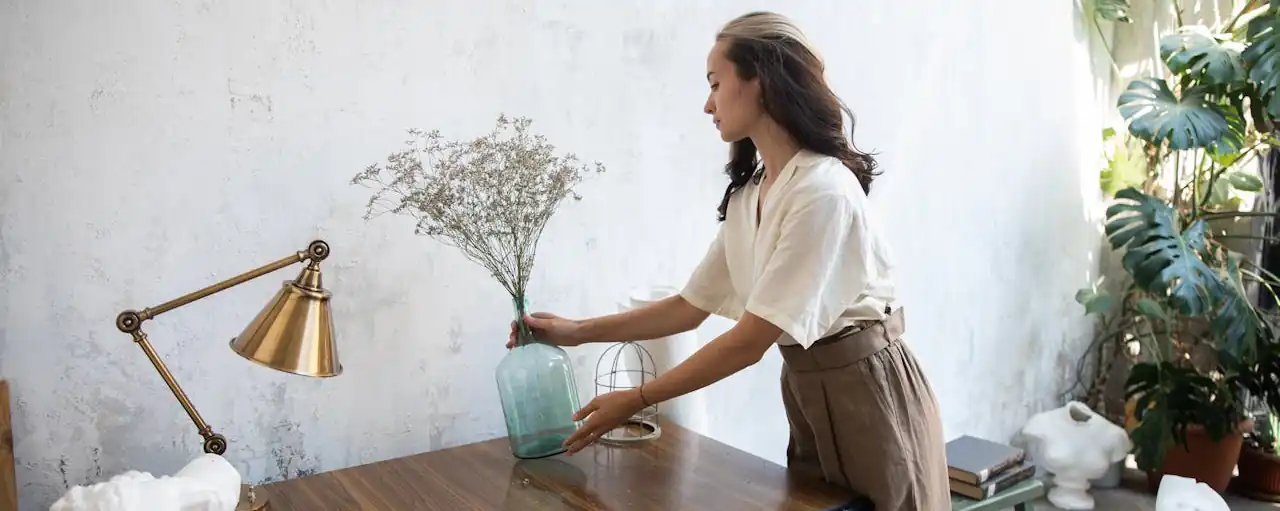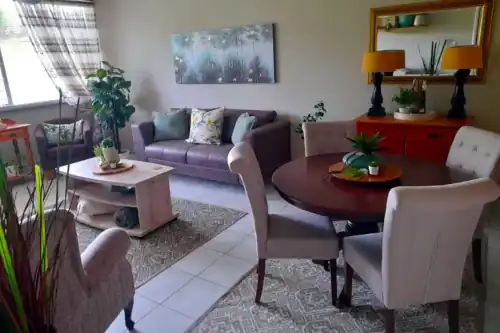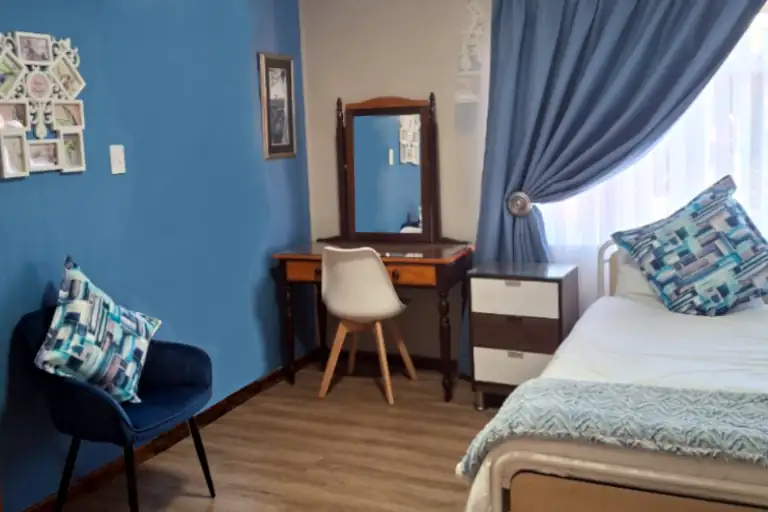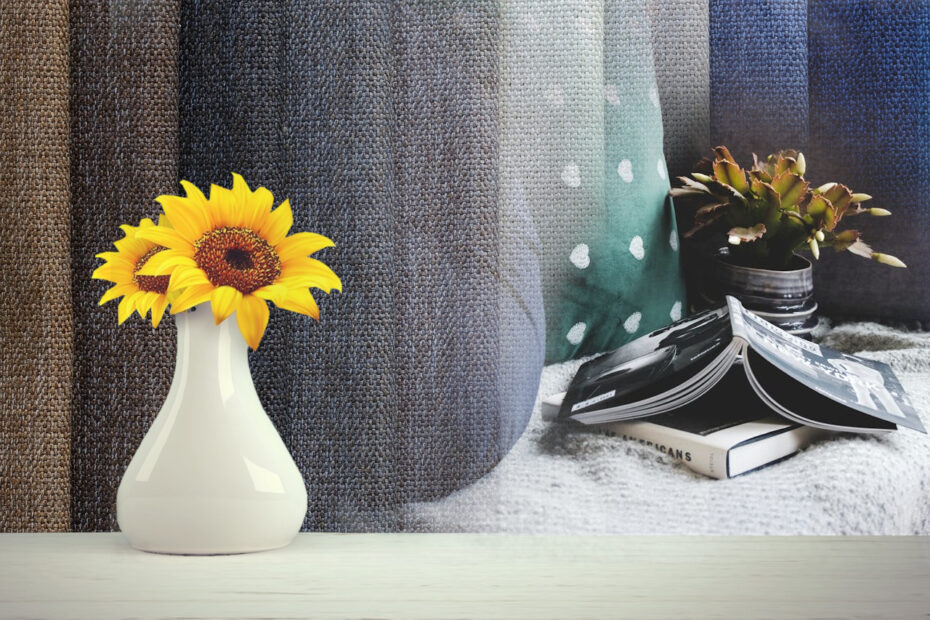Transform Your Space into a Personal Oasis with these Decorating Tips
Where Do You Feel Most At Home?
Think about it for a moment. Perhaps it’s a childhood memory of a cosy reading nook bathed in warm lamplight. Maybe it’s a feeling of calm and rejuvenation upon entering your sun-drenched living room. Or perhaps it’s the sense of belonging you experience in a shared space filled with laughter and loved ones.
The answer? It’s all about decorating. While the places we call home come in all shapes and sizes, they all share one key element: a deliberate and personal touch that reflects who we are and how we live.
Decorating goes beyond simply choosing paint colours and furniture. It’s about creating a comfortable, inviting, and functional space that fosters well-being and happiness. Whether you’re a senior considering independent living (check out our previous post: “Exploring the Benefits and Considerations of Independent Living for Seniors.“) or a retiree seeking ways to stay entertained (we’ve got you covered in “Retired? How Do You Stay Entertained?“), a well-designed environment can dramatically improve your quality of life.
The emotional and psychological benefits of a well-decorated space are undeniable. Studies have shown that a thoughtfully designed environment can:
- Reduce stress and anxiety
- Boost feelings of comfort and security
- Enhance creativity and productivity
- Improve sleep quality
- Foster a sense of belonging and connection
This blog post serves as your guide to transforming your space into a personal oasis. We’ll delve into various decorating tips, from understanding your space and setting a budget to choosing the perfect furniture and incorporating finishing touches. By the end, you’ll be equipped with the knowledge and inspiration to create a space that truly reflects you and makes you feel most at home.

Understanding Your Space: The Foundation for Decorating Success
Before diving headfirst into paint swatches and furniture shopping sprees, take a moment to truly understand the space you’re about to decorate. This initial planning stage will pay dividends in the long run, ensuring your decorating choices are functional and aesthetically pleasing.
Know Your Limitations
Whether you’re a homeowner or a renter, understanding the limitations of the space is crucial. If you’re leasing an apartment or flat, familiarizing yourself with any restrictions or regulations regarding decorating is essential. These might include limitations on painting walls, installing fixtures, or making major structural changes. Always check your lease agreement or consult your landlord before undertaking any significant modifications.
Consider the Blueprint
Now, let’s delve into the physical characteristics of your space. Take note of the room’s size, shape, and layout. Is it a spacious open-plan living area, a cosy nook tucked beneath the stairs, or a long, narrow hallway with limited floor space?
Understanding the dimensions will guide your furniture selection and arrangement. For example, a sprawling living room might accommodate a large sectional sofa and a coffee table, while a more intimate nook might benefit from a comfy armchair and a small side table.
Pay close attention to the natural light sources – large windows bathing the space in sunlight, or a single skylight offering a more focused beam? The amount of natural light will influence your lighting strategy and colour scheme choices. Spaces with abundant natural light can accommodate bolder colour palettes, while rooms with limited natural light might benefit from lighter colours and strategic lighting placement to create a sense of airiness and openness.
Functionality First
Ultimately, the best-decorated space functions well for you. Consider the intended use of the room. Are you creating a tranquil reading nook for quiet evenings with a good book? Maybe you’re envisioning a vibrant entertaining area for hosting gatherings with friends and family. Identifying the primary function of the space will guide your decorating decisions and ensure the finished product caters to your needs.
For example, a reading nook might benefit from a comfortable armchair, a well-placed reading lamp, and a small side table to hold your book and a cup of tea. An entertaining area, on the other hand, might call for seating arrangements that encourage conversation, a coffee table for placing refreshments, and perhaps additional lighting options for creating different moods.
By taking the time to understand the limitations, physical characteristics, and intended use of your space, you’ll lay the groundwork for a successful decorating project. This foundation will ensure your decorating choices contribute to a space that’s not just beautiful but also comfortable, and functional, and truly reflects your personality.
Charting Your Course to Decorating Success
Planning and Setting a Budget
Just like any successful journey, decorating requires a well-defined plan and a clear roadmap. Before diving into the world of paint samples and furniture catalogues, take a step back and strategize.
Planning Makes Perfect
The initial planning stage sets the tone for your entire project. It allows you to approach decorating with a sense of purpose and avoid impulse purchases that might not work in the long run. Here, consider creating a mood board or vision board. This can be a physical board where you collect magazine clippings, fabric swatches, paint colour samples, and any other visual elements that inspire you.
Alternatively, you can create a digital mood board using online tools like Pinterest or Canva. This visual representation of your desired style will guide your decorating decisions and ensure everything works cohesively together.
Budgeting for Beauty
Let’s talk about the practical side of things: setting a realistic budget. Decorating doesn’t have to break the bank! Start by determining how much you’re comfortable spending on the entire project. This will help you prioritize purchases and avoid overspending.
Stretch Your Decorating Rand
- Thrifty Treasures: Explore the world of thrift stores and vintage shops. You might be surprised by the hidden gems you can find! Often, these stores offer unique pieces with character and history at a fraction of the retail price. With a little DIY magic (think repainting or reupholstering), you can transform a pre-loved piece into a statement decor item.
- Online Marketplaces: Online platforms offer a plethora of options for finding affordable furniture and decor. Sites like Gumtree, Facebook Marketplace, and dedicated online marketplaces like Junk Mail can be treasure troves for finding gently used pieces. Just be sure to inspect the item carefully before purchasing.
- Get Crafty: Unleash your inner DIY enthusiast! Repurpose old furniture pieces, create your artwork, or sew throw pillows. Not only will this save you money, but it will also personalize your space and add a touch of your unique style.
- Sales and Clearance Events: Keep an eye out for sales and clearance events at furniture stores and home décor retailers. You might score amazing deals on furniture, rugs, artwork, and other decorative items.
- Shop Off-Season: Consider shopping for seasonal items outside of peak season. For example, you might find great deals on outdoor furniture and summery décor during the winter months or vice versa.
By planning your decorating project and setting a realistic budget, you can create a stunning space that reflects your personality without breaking the bank. Remember, a little creativity and resourcefulness can go a long way in achieving a beautiful and stylish home.
Painting the Mood You Desire
Colour Psychology and Choosing a Colour Scheme
Have you ever walked into a room and instantly felt a sense of calm or a surge of energy? Believe it or not, the colours surrounding us can significantly impact our moods and emotions. This fascinating concept is known as colour psychology, and understanding it can be a powerful tool when decorating your space.
Different colours evoke distinct feelings. Warm colours, like reds, oranges, and yellows, tend to create a sense of warmth, energy, and excitement. They can be perfect for rooms where you want to feel invigorated, such as a home gym or a creative workspace. On the other hand, cool colours, like blues, greens, and purples, promote feelings of calmness, relaxation, and peace. These colours are ideal for bedrooms, living rooms, or any space where you want to unwind and de-stress.
But choosing a colour scheme isn’t just about individual colours; it’s about creating a harmonious and visually pleasing combination. Here are some tips for selecting a colour scheme that complements your space and reflects your personality:
- Consider the Space: Think about the size, natural light, and intended use of the room. For smaller spaces, lighter colours can create an illusion of spaciousness, while darker colours can work well in larger rooms. Additionally, the amount of natural light can influence your choice. Rooms with abundant light can handle bolder colours, while rooms with limited natural light might benefit from lighter palettes.
- Embrace Your Personality: Don’t be afraid to inject your personality into your colour scheme! Do you gravitate towards vibrant hues or serene tones? Consider colours that evoke positive emotions and make you feel comfortable.
- The Colour Wheel is Your Friend: The colour wheel is a valuable tool for creating harmonious colour combinations. It visually depicts primary, secondary, and tertiary colours and their relationships to each other. Analogous colour schemes (using colours next to each other on the wheel) create a calm and cohesive feel. Complementary colour schemes (using colours opposite each other on the wheel) create a more vibrant and energetic effect. Explore the colour wheel and experiment to find a combination that speaks to you.
By understanding colour psychology and using it to your advantage, you can create a colour scheme that not only looks beautiful but also contributes to the overall mood and functionality of your space.
Modern Living Flats

Basic Cottages

Modern Comfort Cottages

Comfortable Frail Care

Crafting a Flowing and Functional Space
Furniture Selection and Arrangement
Furniture forms the backbone of any decorated space. It provides seating, storage, and surfaces, while also contributing significantly to the overall aesthetic. Selecting the right furniture pieces is crucial for creating a comfortable, functional, and visually pleasing environment.
The key lies in striking a balance between size and functionality. Measure Your Space Before You Measure Furniture: It might sound obvious, but accurately measuring your room is essential before taking off on a furniture shopping spree. This step avoids any nasty surprises of sofas that don’t fit through doorways or beds that leave no room for bedside tables.
Once you have your measurements in hand, consider the functionality of the space. Is it a living room designed for entertaining guests, or a bedroom intended for relaxation and sleep? Choose furniture pieces that cater to the intended use of the room. For example, a living room might prioritize a comfortable sofa and spacious coffee table, while a bedroom might benefit from a bed with ample storage and a nightstand for essentials.
Now, let’s talk about arrangement. The way you arrange your furniture significantly impacts the flow and functionality of the space. Aim to create a conversational flow in rooms where socializing is the primary focus. For example, position chairs and sofas facing each other around a coffee table to encourage easy conversation.
Maximizing Space Utilization is another crucial aspect of furniture arrangement. In smaller rooms, consider furniture with built-in storage, like ottomans with hidden compartments or beds with drawers. Utilize vertical space by opting for tall bookshelves or cabinets that take advantage of unused wall areas.
Finally, let’s address the furniture scale. Oversized furniture can overwhelm a small room, creating a cramped and uncomfortable environment. Choose furniture pieces that are proportionate to the size of the space. Leave ample walking space between furniture and avoid blocking doorways or windows. Remember, creating a sense of spaciousness is key to a well-decorated room.
By carefully selecting furniture based on size and functionality, and arranging it to maximize space and create a comfortable flow, you can transform your space into a haven of both comfort and style.
Lighting: Setting the Mood with the Power of Illumination
Lighting is often an overlooked element of decorating, but it plays a crucial role in creating both atmosphere and functionality in a space. The right lighting can transform a room from feeling sterile and uninviting to warm, welcoming, and perfectly suited to its intended purpose.
The key lies in utilizing a layered approach to lighting. This involves incorporating a combination of ambient, task, and accent lighting to achieve the desired effect.
- Ambient lighting: This is your general room illumination, providing overall brightness. It can come from overhead lights, recessed fixtures, or track lighting.
- Task lighting: This provides focused illumination for specific activities, such as reading, working on a computer, or applying makeup. Table lamps, floor lamps, and under-cabinet lighting are all examples of task lighting.
- Accent lighting: This is all about highlighting specific features or creating a decorative touch. Sconces, recessed spotlights, and strategically placed lamps can all be used for accent lighting.
By combining these different types of lighting, you can create a layered effect that caters to both the functional needs of the space and the desired mood. For instance, during the day, maximize natural light by strategically placing furniture and utilizing sheer curtains. In the evening, switch to ambient lighting for a warm glow and incorporate task lighting for specific activities.
Dimmer switches are your friend! They allow you to adjust the light level for different moods and activities, setting the perfect ambience for any occasion.
Remember, lighting is all about setting the mood and creating a comfortable and inviting space. Experiment with different lighting combinations and find what works best for you.
Weaving Comfort and Style
The Power of Textiles
Don’t underestimate the transformative power of textiles! Rugs, throws, and pillows are the unsung heroes of decoration, adding layers of texture, colour, and visual interest to a space. These elements can instantly elevate a room from feeling bare to brimming with personality and comfort.
Rugs: A well-chosen rug can act as the foundation of a room, defining areas and anchoring furniture groupings. When selecting a rug, consider both size and material. For example, a large area rug in a living room can visually ground the space and create a sense of cohesion.
Conversely, a smaller rug placed strategically under a coffee table can define a specific seating area. Material selection also plays a role. High-traffic areas might benefit from durable materials like wool or synthetic fibres, while bedrooms can welcome softer textures like plush shag or woven cotton.
Throws and Pillows: These versatile textiles add pops of colour, pattern, and a touch of cosy comfort to your furniture. Experiment with different textures and patterns to create a layered look. For instance, a chunky knit throw draped over a sofa can add a touch of warmth and texture, while a selection of patterned pillows can inject vibrant colour and personality.
Don’t be afraid to mix and match! Combining different patterns and textures can add visual interest and create a sense of depth in your space. Remember, textiles are a fantastic way to express your style and personalize your décor. So, have fun and let your creativity flow!

The Finishing Touches
Personalizing Your Haven with Artwork, Accents, and Greenery
Now that we’ve addressed the foundation of your décor, let’s delve into the finishing touches: the elements that truly transform a space from functional to personal. Here’s where your unique style and personality can shine through!
Artwork and Accessories: Artwork is more than just something to hang on a wall. It’s a reflection of your taste, interests, and emotions. Choose pieces that resonate with you and complement your overall colour scheme. Don’t be afraid to visit local galleries, explore online art marketplaces, or even consider creating your artwork!
Displaying Your Treasures: Once you’ve chosen your artwork, consider how to showcase it. Hanging a single statement piece can create a focal point, while creating a gallery wall with a curated selection of smaller pieces adds a dynamic and personalized touch. Shelves can also be utilized to display artwork, sculptures, or other treasured objects.
Personal Touches Tell Your Story: Don’t forget the power of personal accessories! Photographs of loved ones, travel souvenirs, or decorative objects all add a layer of personality to your space. These curated pieces tell your story and create a sense of connection to the things that matter most to you.
The Greenery Effect: Incorporating indoor plants is a fantastic way to add life, colour, and a touch of nature to your space. Plants not only offer aesthetic benefits, but they also help purify the air and can even promote feelings of well-being. Choose plants that suit the amount of natural light available in the room, and consider incorporating hanging planters, floor plants, or even a mini herb garden for a touch of freshness.
By carefully selecting artwork, accessories, and incorporating some greenery, you can personalize your space and transform it into a true reflection of you. Remember, there are no hard and fast rules – let your creativity flow and have fun telling your story through your décor!
Beyond Aesthetics
Functionality and Comfort for a Home that Works
While creating a beautiful and stylish space is undeniably important, a truly successful home environment prioritizes both aesthetics and functionality. After all, your décor should not only look good but also cater to your daily needs and ensure your space feels comfortable and inviting.
Comfort is Key: When decorating, prioritize creating comfortable seating areas. Invest in furniture that offers proper back support and encourages relaxation. Consider adding plush cushions and throws to further enhance coziness.
Storage Solutions: Clutter can quickly make a space feel cramped and uncomfortable. To combat this, maximize storage solutions. Utilize ottomans with built-in storage compartments, invest in stylish bookshelves, or incorporate decorative baskets for a functional and aesthetically pleasing approach.
Ergonomics Matter: Don’t forget about ergonomics, especially in frequently used areas like home offices or workspaces. Incorporate chairs with adjustable lumbar support and proper desk heights to promote good posture and prevent discomfort.
Breathing Easy: Indoor air quality significantly impacts our well-being. Ensure proper ventilation in your space by opening windows regularly and consider investing in air-purifying plants or air filters. Fresh air circulation is crucial for maintaining a healthy and comfortable home environment.
Remember, your home is a haven for relaxation and rejuvenation. By striking a balance between aesthetics and functionality, you can create a space that not only looks beautiful but also caters to your comfort needs and allows you to thrive.
Decorating – Your Key to a Personalized Oasis
We’ve delved into the exciting world of decorating, guiding you through understanding your space, setting a budget, and incorporating finishing touches that reflect your personality. Remember, decorating offers more than just aesthetics; it allows you to create a functional, comfortable, and inspiring environment that embodies your unique style and caters to your needs. So, ignite your creativity, embrace the insights we’ve shared, and begin the exciting process of transforming your space into a personal sanctuary you’ll cherish as your home.
Thank you for your continued support, we appreciate your likes, follows and retweets on Facebook, Twitter, Pinterest and LinkedIn. Make sure to share this post with friends and family.
You can make a difference
With your assistance, the volunteers at La Gratitude will be able to take better care of not only the residents at the old age home but also the greater Newcastle community. La Gratitude is constantly involved in outreach projects to help the elderly in need in and around Newcastle.
Your donations will be greatly beneficial in the provision of food and other basic necessities for the less fortunate elderly people that require assistance.
Donating is easy, click here to donate now.







